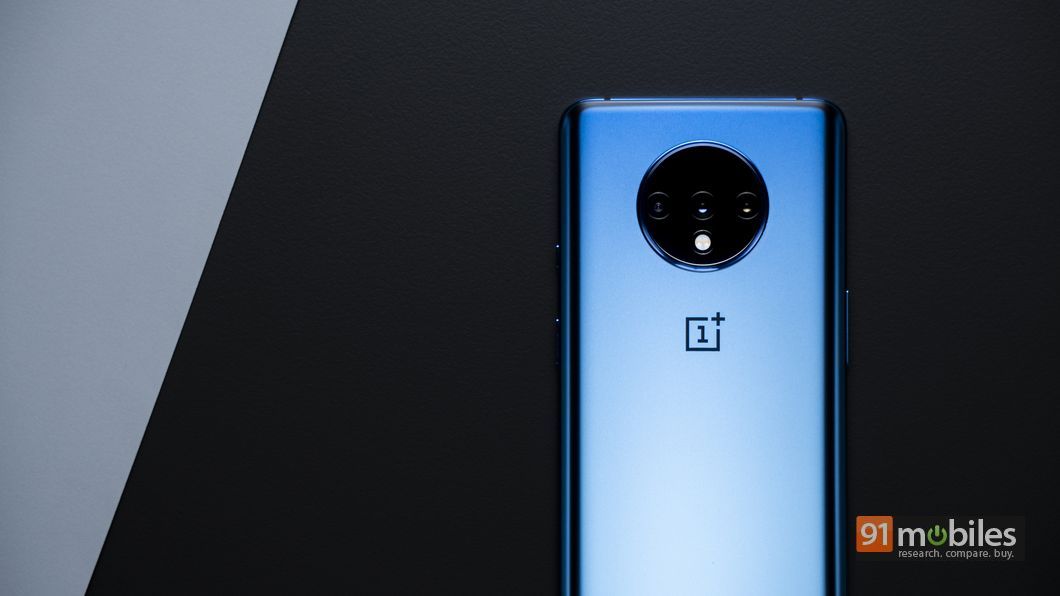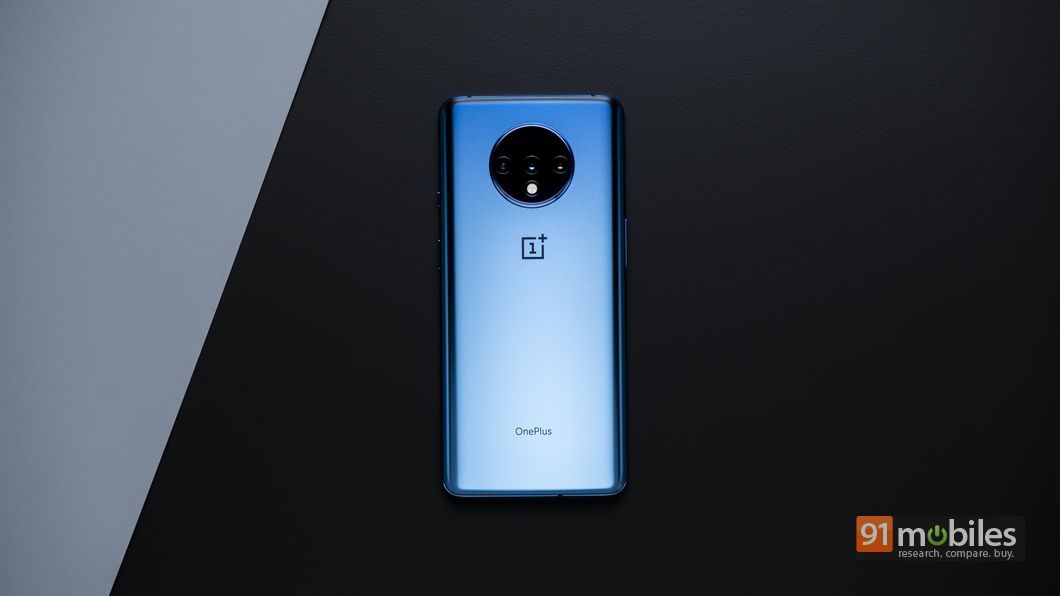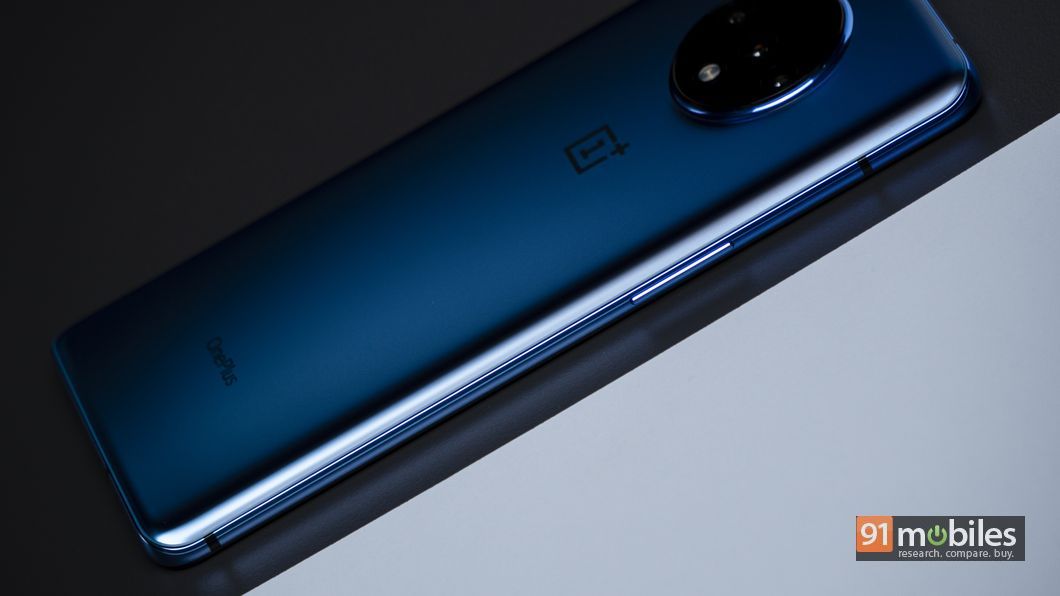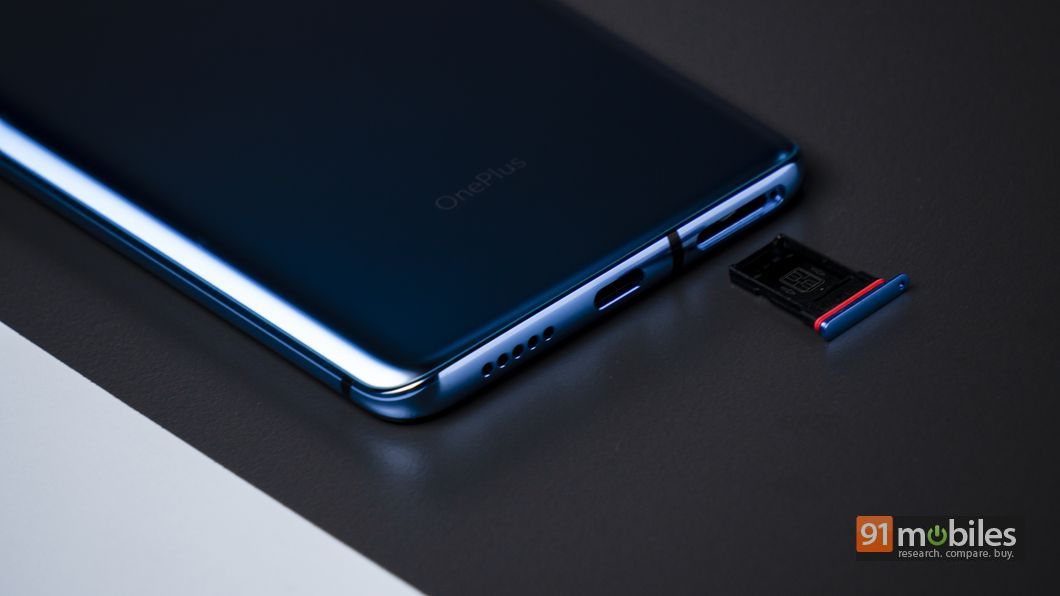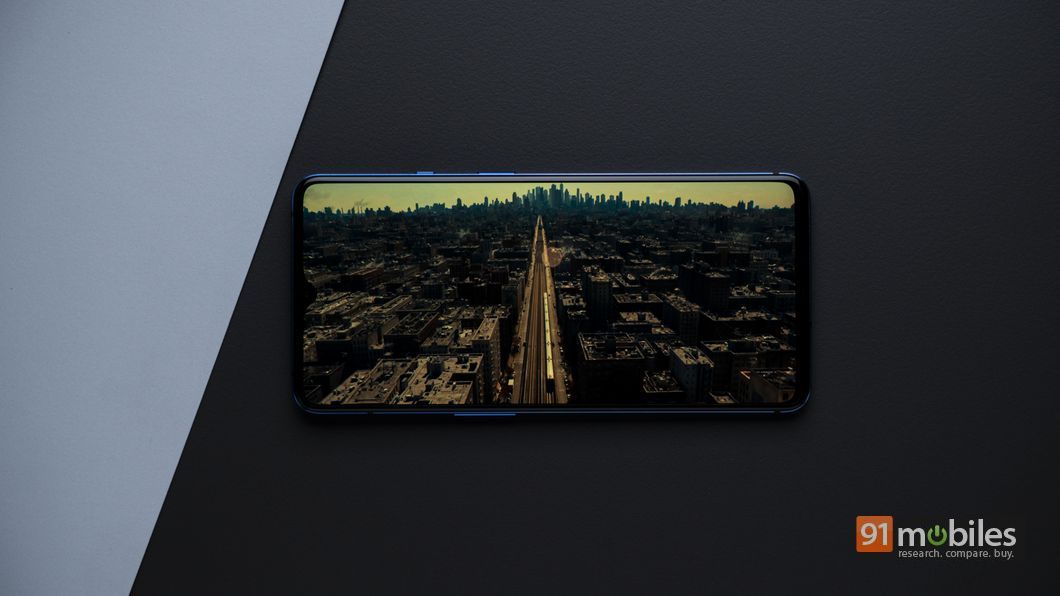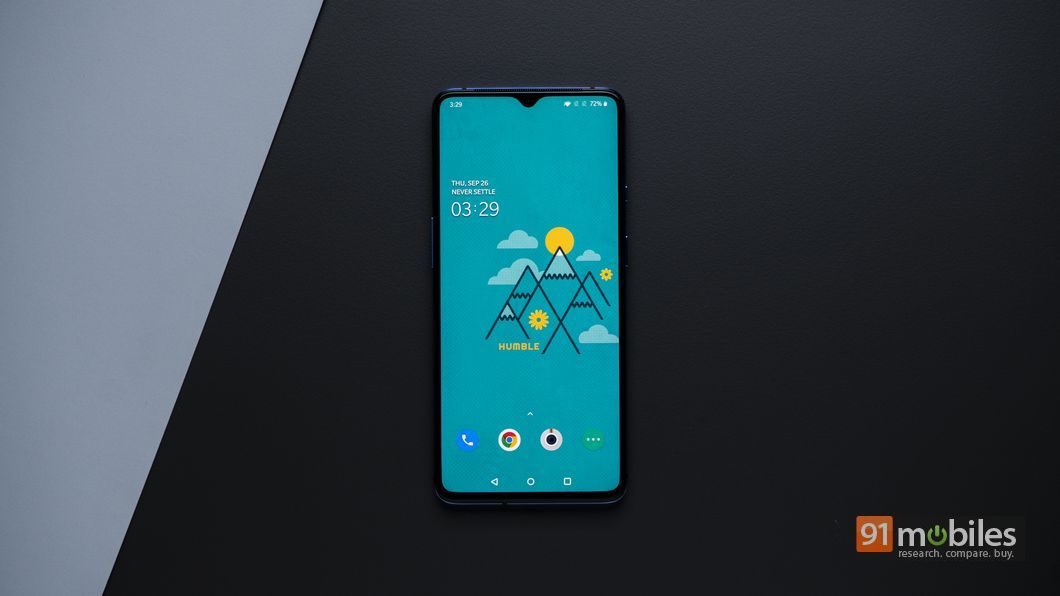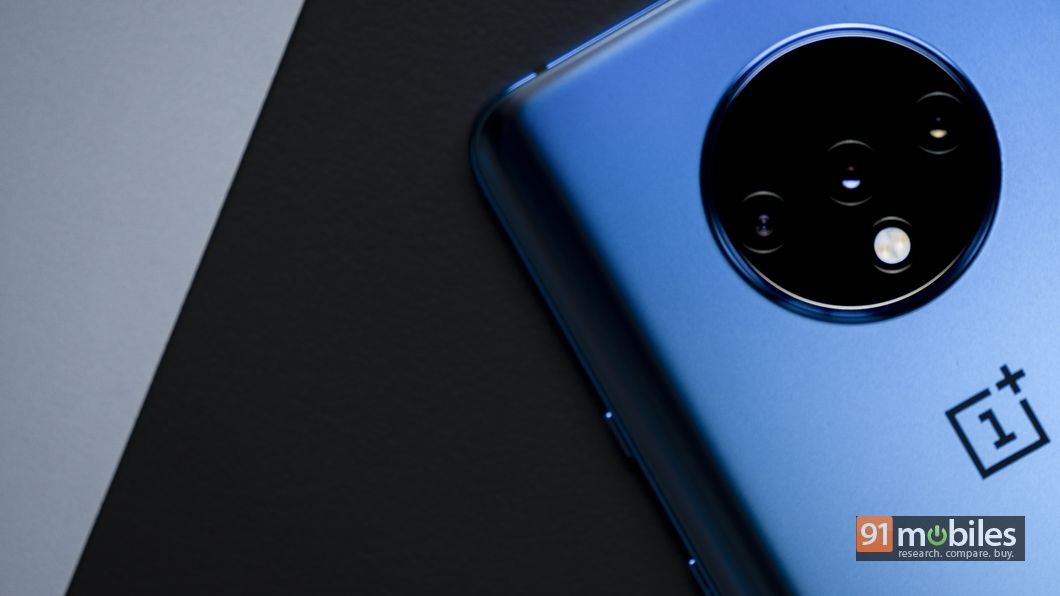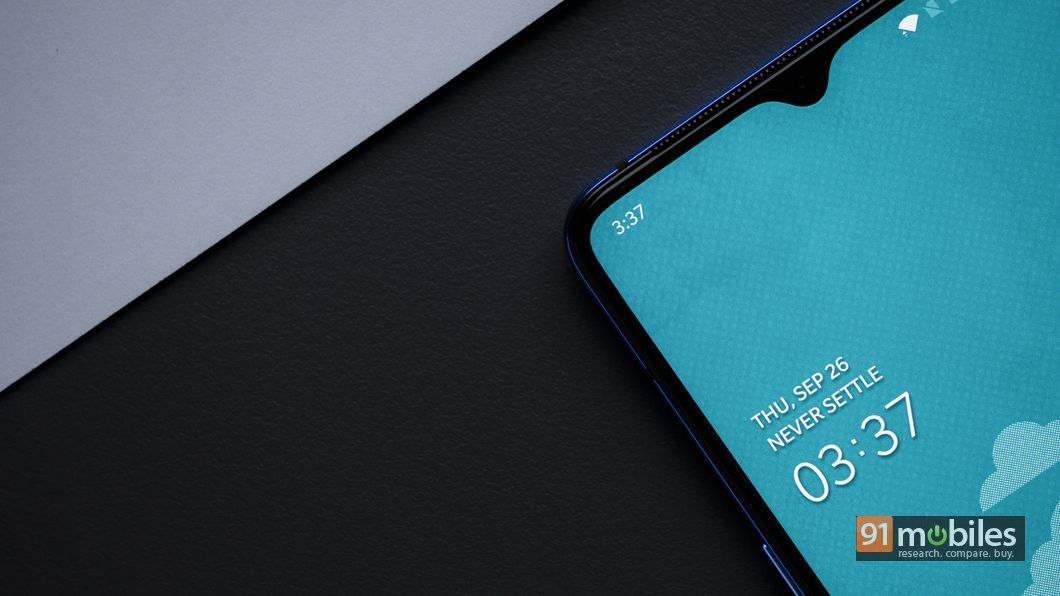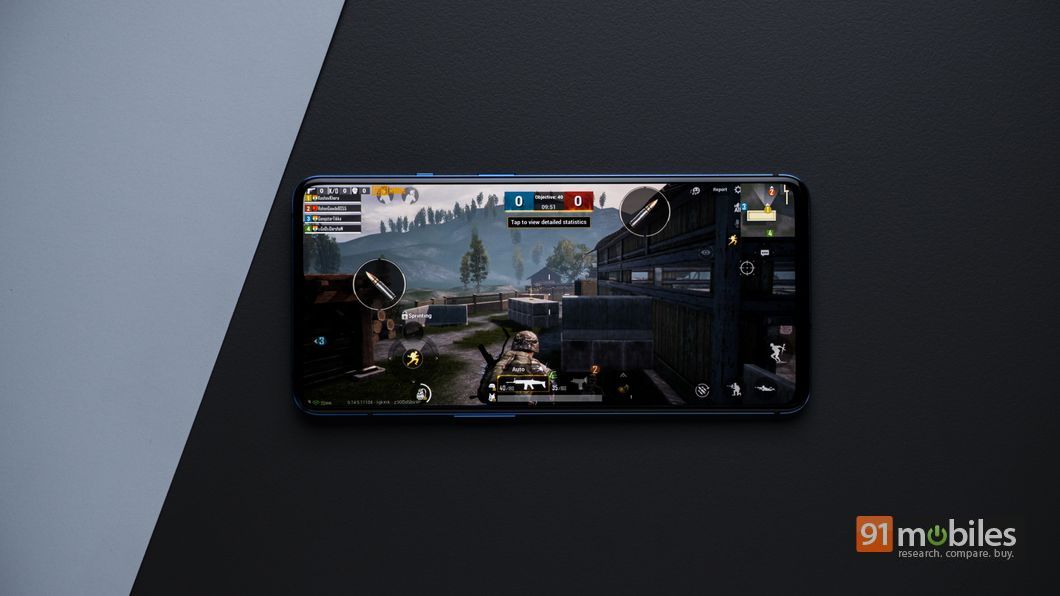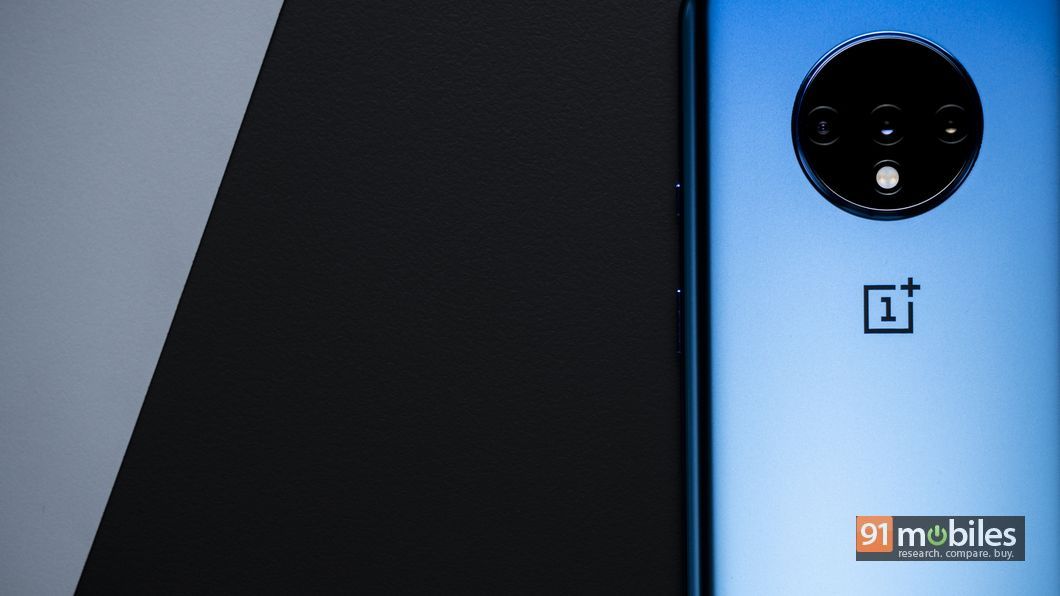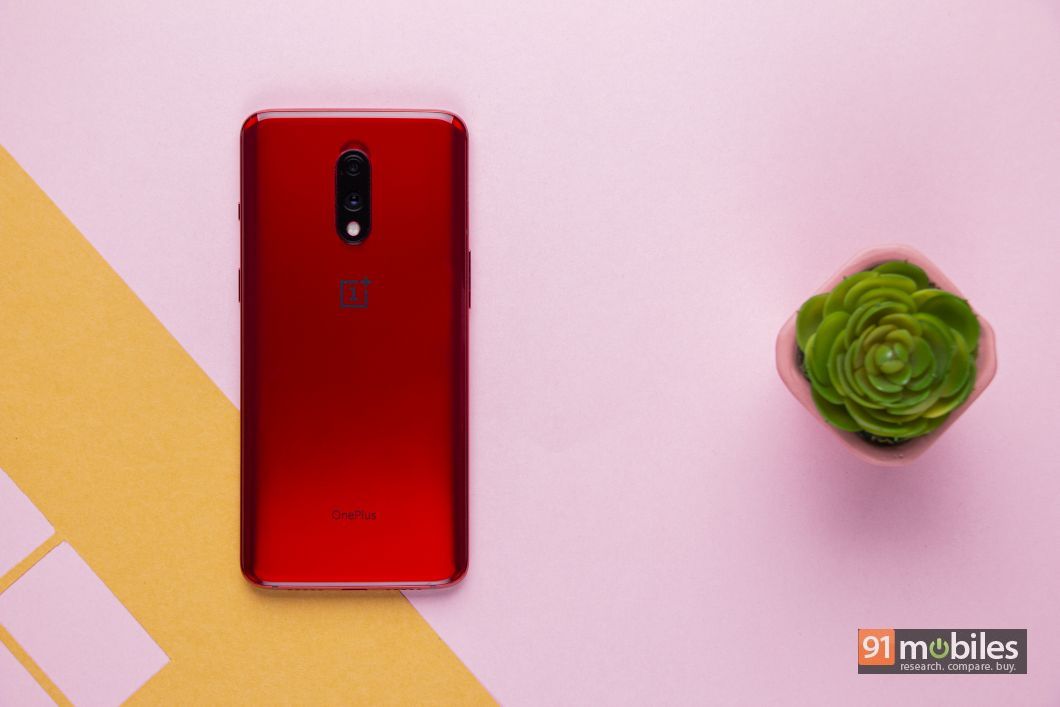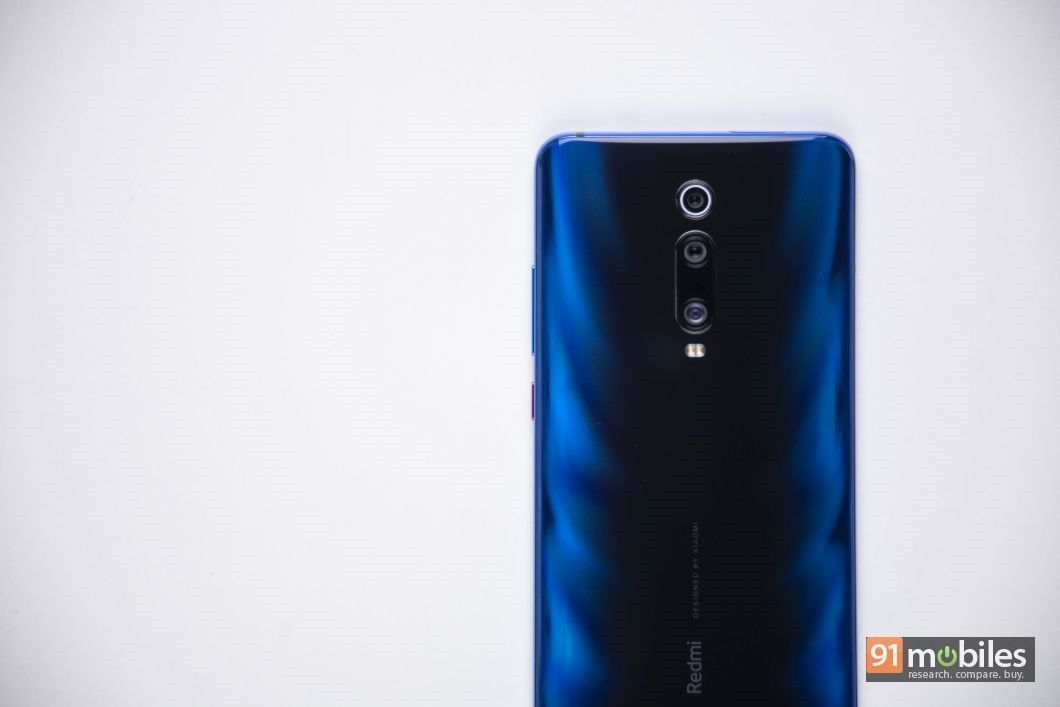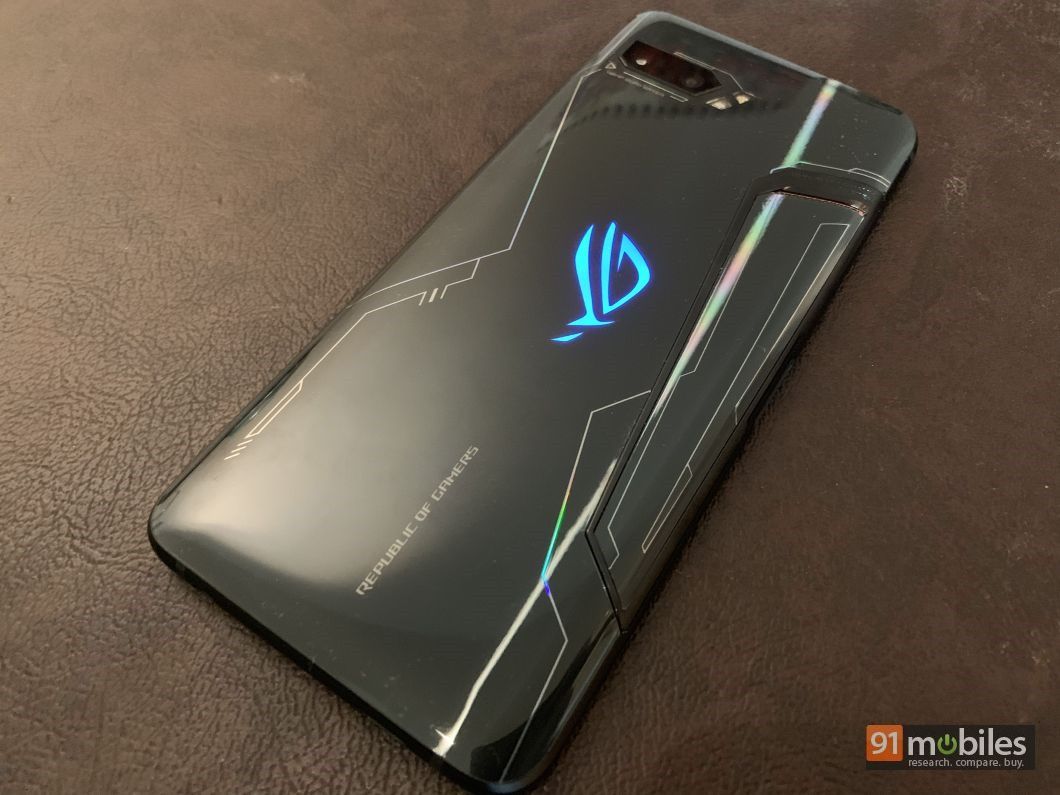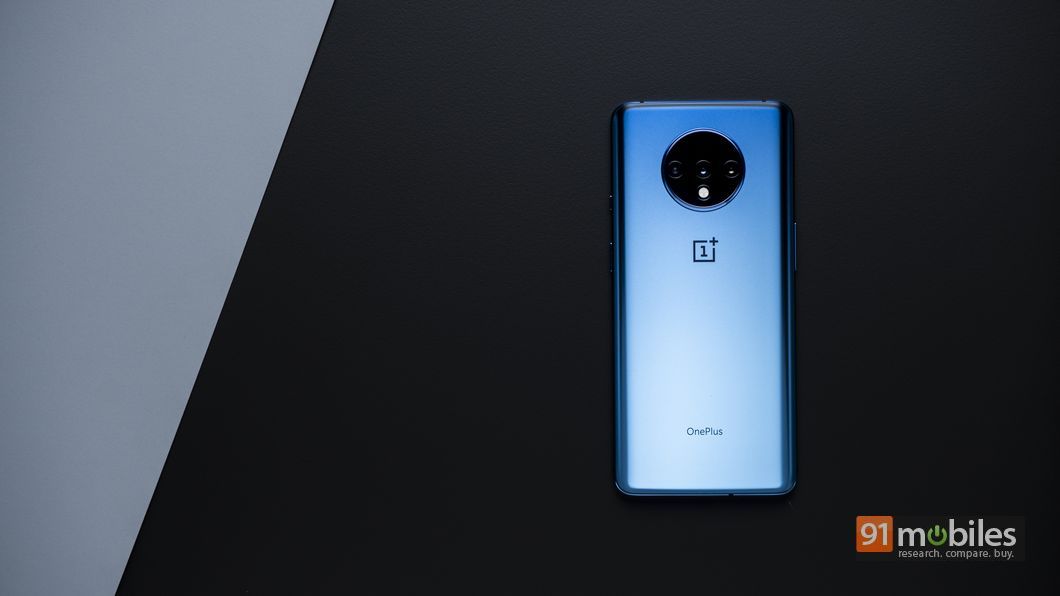“Our hot take on OnePlus’ latest affordable flagship – the 7T”
I’ve been an avid OnePlus user for the better part of three years now. My affair with the brand started back when the OnePlus 3 (review) was announced and to date, my primary SIM goes back into a OnePlus phone after I’m done testing a device – I just can’t settle for unoptimised software and sub-par hardware.
However, over the years, numerous top-spec phones have entered the flagship killer space offering most (at times even more) of what OnePlus’ offerings do. This begs the question – can the company’s latest OnePlus 7T be the go-to smartphone for spec-hungry buyers? To see if the phone fit the bill, I used it as my daily driver for the better part of a week and here’s what I make of it.
Specs at a glance
| Display | |
| Size | 6.55 Inch |
| Resolution | 1080 x 2400 pixels |
| Performance | |
| CPU | Single core, 2.94 GHz + Tri core, 2.42 GHz, Snapdragon 855 Plus |
| RAM | 8 GB |
| Storage | |
| Internal memory | 128 GB |
| Battery | |
| Capacity | 3800 mAH, Li-ion, Non removable |
| Camera | |
| Primary camera | 48 MP |
| Secondary camera | 16 MP |
| Connectivity | |
| Network support | Dual SIM 4G |
| Other options | Wi-Fi, Bluetooth 5.0, GPS |
| Others | |
| Battery Capacity | 3800 |
| Operating system | Android 10 Q |
Design and Display
OnePlus phones with a ‘T’ in the suffix rarely ever sport a bold, new design and the 7T is no different. The handset has been sketched over OnePlus 7’s (review) outline, with some cosmetic changes thrown in here and there. For one, the back camera setup looks drastically different, and unlike the 7’s vertical orientation, the rear cameras on the 7T are lined up horizontally on a big disc.
And since we’re on the subject of the smartphone’s back, the 7T ships with a matte coating as opposed to the glossy paintjob of the 7. The company has even experimented with a new blue hue dubbed Glacier Blue, which looks like a cross between the OnePlus 7 Pro’s Nebula Blue finish and the 7’s Mirror Blue colour. The 7T is also noticeably taller, dwarfing the OnePlus 7’s 6.41-inch panel with its upgraded 6.55-inch screen. Lastly, the handset ships in a longer red and black box which is hands down, one of the best-looking retail packaging I’ve ever seen on a phone.
Barring that, the 7T looks pretty much the same as its predecessor and it too ships with glass on both, the front as well as the back. There’s a tiny waterdrop notch peeping through the display, which the company claims is 31.46 percent smaller than the one on the OnePlus 6T (review). However, I honestly couldn’t tell the size difference apart. Regardless, the OnePlus 7T is still a very good-looking phone with tons of appeal thanks to its thoughtful design.
That being said, while the OnePlus 7’s design offered a comfortable in-hand grip, the 7T is as slippery as they get. This could be in part due to the smartphone’s slimmer frame, or the matte coating on its back, but you’d be wise to slap a case on the phone once you unbox it. On the bright side, the smartphone doesn’t smudge as easily now, so you win some, you lose some.
There’s still no headphone jack on the phone, neither does the company provide a dongle in the retail packaging. So, you’ll have to suck it up and buy one if you want to drain out the outside world. Or, you could go wireless. The Riversong X3 truly wireless earphones I reviewed a while ago are worth a buy – they look good, and sound great.
Shameless plug aside, let’s talk about the OnePlus 7T’s display now. So, with the 7T, you’ll get a 6.55-inch, 20:9 aspect ratio panel with full HD+ resolution. The display is AMOLED in nature and more importantly, offers a high 90Hz refresh rate. This, in turn, paves way for a much better experience, as the phone seems faster and snappier owing to improved perceived responsiveness of the display on the user’s end. Not to mention, you’ll also be able to enjoy a growing library of games which support high-refresh rate panels on the phone. Suffice it to say, the OnePlus 7T’s display is in a different class altogether and you’ll revel consuming content on it.
Before I talk about the smartphone’s performance, let me quickly address some other features of the 7T’s design –
1 – The in-display fingerprint sensor on the 7T is excellent and it worked flawlessly during my testing. In fact, it just might be the quickest optical sensor in the market.
2 – Same goes for the smartphone’s face unlock tech too and I was inside my home screen before I could even blink my eyes.
3 – The smartphone is backed by dual-speakers, just like its predecessor. The setup gets fairly loud, however, it could do with a bit more bass.
Cameras
Since its inception, OnePlus has been ostracised for outfitting its offerings with sub-par cameras. However, the company turned a new leaf with its 7 and 7 Pro (review) model, which after some updates clicked stellar photos. To that extent, the OnePlus 7T too clicks decent photos but it isn’t an outright improvement over its predecessors. But, before I dissect the smartphone’s camera performance, allow me to talk about the specs.
The OnePlus 7T ships with a triple-camera setup at the back, comprising a 48MP Sony IMX 586 sensor with f/1.6 aperture, a 12MP telephoto lens with f/2.2 aperture and a 16MP wide-angle lens with f/2.2 aperture and a 117-degrees field of view. For selfies, 7T retains the 16MP, Sony IMX 471 sensor which debuted on the brand’s OnePlus 7.
Now that we have the specs out of the way, let’s look at some photos –
1 – The OnePlus 7T clicks brilliant photos during the day, with ample details and punchy colours. The shots are rarely exposed poorly, so you won’t have to worry about any instances of highlight clipping or manually metering a shot with the smartphone.


2 – Compared to OnePlus 7, the 7T offers more vibrancy in the images. Case in point, the Norenj logo, which is a shade brighter on the 7T than the OnePlus 7. Barring that, shots from the two devices have the same amount of details, so it’ll boil down to your own personal preference. Since I like a little bit of flair in my shots, I gravitated more towards the 7T’s cameras.
3 – The OnePlus 7T also offers more versatility in the photography department when pit against the OnePlus 7. The handset ships with a telephoto and a wide-angle lens, both of which click stellar photos when the sun’s out. The wide-angle shots don’t distort towards the edges, and the fisheye effect isn’t that noticeable either. That being said, the colour temperature of the three sensors is quite inconsistent, with the standard shooter clicking photos with a cooler tint and the wide-angle lens opting for a warmer tone.
4 – Unfortunately, the 7T still botches up reds, which is evident from the picture of a flower I’ve attached in the gallery. Similarly, the handset’s Super Macro mode, although quite useful, has trouble focussing on a subject. Therefore, you’ll have to keep your hands extremely steady when using the mode.


5 – Surprisingly, the OnePlus 7’s dedicated depth sensor clicks better portraits than the OnePlus 7T. If you look at the comparison images I’ve attached above, you will be able to see that the OnePlus 7 resolved details around my arm better and the blur effect was more consistent on the phone too.
6 – The OnePlus 7T clicks gorgeous selfies, both during the day as well as the night. What’s more, the portrait mode for the front camera works well too and rest assured, selfie enthusiasts will find little to complain about with the 7T in their pockets.
7 – In terms of lowlight, the OnePlus 7T’s dedicated NightScape mode works wonders and livens up a dim scene easily. That said, the handset reduces noise at the expense of dramatising a shot, and photos clicked with the NightScape enabled sometimes come across as too bright.
All in all, the OnePlus 7T offers a joyous photography experience and barring some misses, the smartphone is undoubtedly a reliable pocket shooter.
Performance, Software and Battery life
Let’s get the obvious out of the way first – the OnePlus 7T is a stupid fast phone. In fact, it’s THE fastest Android phone in the market right now alongside the ASUS ROG Phone 2 (first impressions). Spec-wise, the handset features Qualcomm’s new and improved Snapdragon 855+ processor which has been paired with 8GB of RAM and either 128GB or 256GB of UFS 3.0 storage.
Unsurprisingly, the specs translate into incredible day-to-day performance, and I could pretty much run anything and everything on the 7T without worrying about it slowing down. Apps opened quickly, animations were slick and multitasking was a breeze too. Quite honestly, I doubt there’s an app or a game on the Play Store which can bring the 7T down on its knees and the scenery won’t change for at least another year either. So, if you are all about that blistering speed, then you should definitely consider buying the 7T.
Now, it goes without saying but if you’re using the OnePlus 7, or any Snapdragon 855-toting smartphone, then it makes little sense to upgrade to the 7T in hopes of a performance hike. To give you a better picture, I ran GeekBench 5 on both, the OnePlus 7 Pro and the OnePlus 7T wherein, the 7 Pro secured 717 points in single-core tests and 2,589 points in multi-core tests. On the contrary, the 7T scored a hair higher in single-core and multi-core tests and wrapped up 792 and 2,796 points respectively. Clearly, the 7T is the quicker of the two, but not by much.
I’ve always fancied OnePlus’ software and, the 7T is actually the first phone in the world to run Android 10 out of the box. The company’s Oxygen OS skin is undoubtedly, the best custom skin in the business. Or it was, until I used the 7T. Although OnePlus was quick to roll out the Android 10 update for its phones, I feel that the software on the 7T is rushed, and it doesn’t quite give the impression of a finished product. During my stint with the phone, I’ve come across numerous issues with the device’s software which I’ve listed my grievances down below –
1 – Android 10 on the OnePlus 7T doesn’t play well with third-party launchers like Nova, and I noticed that the application would crash from time to time and reset gesture-based navigation back to the three-button layout.
2 – Social media services like WhatsApp and Instagram outright refused to let me send a photo from my gallery. The apps would either freeze or force close, which was quite infuriating.
3 – I also noticed issues with third-party keyboards such as SwiftKey, which worked fine for the most part, but the ‘spacebar’ and the ‘v’ key would stop responding from time to time.
4 – Then, there’s the camera app, which exhibits jarring flashes when switching from the wide-angle to the standard lens. Moreover, at times, the app wouldn’t let me switch back to the wide-angle shooter.
5 – Lastly, the phone refused to install benchmarking applications like Antutu and 3D Mark for some odd reason.
Now, most, if not all of these issues will undoubtedly be fixed in the next update. That said, it’s still disheartening to see a brand of OnePlus’ pedigree muck up the software on its latest flagship. I’ve covered the rest of the features of OxygenOS based on Android 10 in a separate post, so make sure to check it out.
On the bright side, the OnePlus 7T offers great battery life and the device can easily make it through the end of a heavy workday with some juice still in the tank. I managed to consistently hit over four hours of screen on time with the device, and that’s with the display set to 90Hz. I’m certain you could squeeze in a couple hours more should you cap the refresh rate to 60Hz. To give you a better picture, the OnePlus 7T’s battery drained completely from 75 percent in 13 hours, which is a fantastic number.
Competition
OnePlus 7
It goes without saying that the OnePlus 7 will eat into a portion of the 7T’s sales, and rightfully so. For Rs 5K less, the OnePlus 7 will offer essentially the same experience as the 7T.
However, the 7T does make a compelling case for itself with its high-refresh rate panel and its wide-angle shooter.
Redmi K20 Pro
Redmi’s K20 Pro (review) retails for considerably less than the 7T and despite that, offers a full-view display and more or less the same performance and battery life.
What’s more, the handset even ships with a wide-angle camera sensor, allowing you to take photos of the same variety as you can on the 7T. That being said, OnePlus’ cleaner (albeit buggy) software could sway you over.
ASUS ROG Phone 2
The ASUS ROG Phone 2 is hands down, the biggest threat to the 7T’s dominance in the flagship killer space. The handset retails for the same sum as the 7T and offers a better 120Hz panel, a beefier 6,000mAh battery, a headphone jack, numerous accessories, Air Triggers for improved gaming experience and louder speakers.
On the other hand, the cameras on the OnePlus 7T are significantly superior to the ones on the ROG Phone 2. Consequently, if you want an outright gaming phone, then the ASUS ROG Phone 2 is a no-brainer. However, the 7T offers a more balanced end-user experience.
Verdict
The OnePlus 7T retails for Rs 37,999 and for the price, gets most things right. My only gripe with the smartphone is with its software, which in its current shape and form, is infuriating to use on a day-to-day basis. Consequently, unlike its predecessors, I can’t recommend the 7T with my eyes closed.
The smartphone will undoubtedly get better over time as OnePlus is usually quick to resolve bugs and glitches. Therefore, if you don’t mind waiting for the company to flush out its software quirks, you should go for the 7T – it’s fast, has good cameras and long-lasting battery life. If not, then you’ll find no shortage of compelling devices in the flagship killer space.
Editor’s rating: 3.5 / 5
Pros:
- Ultra-fast performance
- Capable cameras
- Long-lasting battery life
- High refresh rate display
Cons:
- No full-screen display
- Software is extremely buggy

